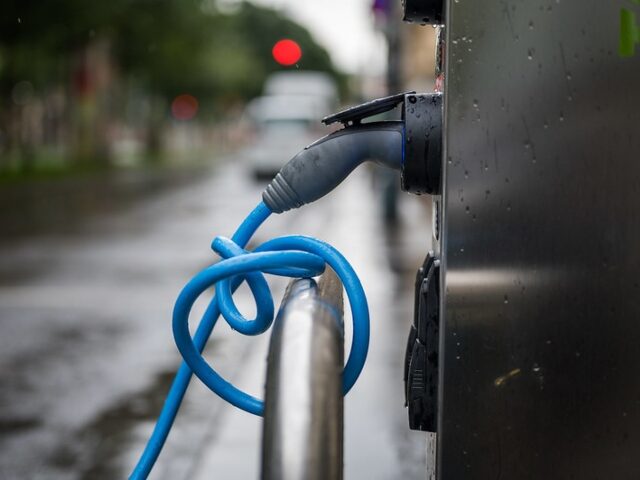To attempt to address the growing issue of ill-mannered electric vehicle owners hogging fast chargers, Electrify America is experimenting with a strict limit at 10 of its busiest charging stations in California.
CNN reports that the growing popularity of electric vehicles has led to a significant increase in demand for public fast charging. However, this demand has also brought to light a frustrating issue for many EV owners: “charger hogs.” These inconsiderate drivers linger at fast chargers, even when their batteries are nearly full, causing long wait times for others in need of a charge.
A recent experience by a Chevrolet Blazer EV owner highlights the severity of this problem. What should have been a 90-minute drive from New York City to Bristol, Pennsylvania turned into a four-hour ordeal due to long lines at EV fast chargers. The driver observed other EV owners with batteries at 92 percent, 94 percent, and even 97 percent capacity, still occupying the chargers, while others waited behind them. EV batteries charge much slower when near capacity as opposed to the initial charge up to 80 percent, a safety feature to prevent fires and other problems.
To address this issue, Electrify America, one of America’s biggest charging companies, is experimenting with a strict limit at 10 of its busiest EV fast charging stations in California. Once a car’s batteries reach 85 percent capacity, charging will automatically stop, and the driver will be instructed to unplug and leave. Failure to do so will result in additional 40-cent-per-minute “idle time” fees for occupying the space.
This approach is similar to a feature in Tesla vehicles, which may automatically limit charging to 80 percent at heavily-used Supercharger stations to reduce congestion. However, unlike Tesla’s system, which allows users to override the limit using the vehicle’s touchscreen, Electrify America’s limit cannot be bypassed.
Robert Barrosa, president of Electrify America, attributes the charger hogging behavior to the fact that electric cars are still relatively new to most owners. Many EV drivers treat fast chargers like traditional gas pumps, aiming to “fill up” their batteries completely. They may not be aware that charging speeds drastically slow down once batteries reach 80 percent capacity, and that it can take as long or even longer to go from 80 percent to 100 percent than it does to reach 80 percent in the first place.
The scarcity of chargers and the long distances between them can also contribute to this problem. As Sara Rafalson, executive vice president for policy at EV charging company EVgo, states, “Once you’re at a charger, it’s like ‘Oh, yeah. I’m filling all the way.’” Both Electrify America and EVgo are rapidly expanding their networks to ensure an ample supply of chargers for future demand, which could help mitigate this hoarding behavior.
However, Electrify America’s free charging agreements with various automakers, including Mercedes-Benz and Hyundai, may exacerbate the problem. When charging is free, drivers have no financial incentive to unplug, leading to some EV owners taking full advantage of the situation, much to the frustration of others waiting behind them.
While there may be legitimate reasons for drivers to charge to 100 percent at a fast charger, such as taking a long trip to an area with few chargers or driving an EV with limited range, Electrify America hopes that its new policy will encourage more considerate behavior among EV owners. The company has access to immense amounts of real-time data on charger usage, which could allow for a more nuanced approach in the future, such as charging different amounts at different times to incentivize drivers to fill their batteries during less busy hours.
Read more at CNN here.
Lucas Nolan is a reporter for Breitbart News covering issues of free speech and online censorship.

COMMENTS
Please let us know if you're having issues with commenting.